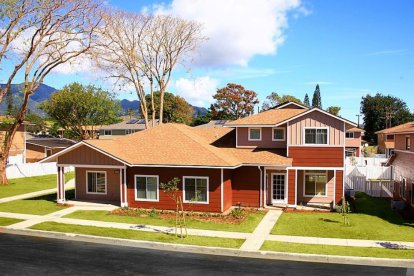Low supply and high prices: the housing problem in the United States that Biden worsens with regulations and bureaucracy
Buyers and sellers alike are dissatisfied with the current real estate market and the president's solution seems to be inadequate.

Wikimedia Commons
The United States faces a housing problem marked by high prices and a shortage of available units. In the words of Daryl Fairweather, chief economist at Redfin, a leading real estate company, the situation could be defined as follows: “Neither sellers nor buyers are satisfied with this market.”
The aforementioned company recently released a report on the current situation, which revealed that prices are appreciating but continue to be inaccessible to the average person.
“Sellers are dissatisfied with offers that they’re getting. And buyers are disappointed in rising prices and rising mortgage rates,” continued Fairweather, who also added that transaction levels are at “recessive lows.”
The causes of the housing crisis
The report identified two main causes of the current problem: the extremely limited housing supply and high mortgage rates. The limited supply is due to a seasonal process and excessive regulations in the sector, which generate poor incentives for this market.
Biden and a solution that solves nothing
As the president announced both in the State of the Union and in a recent speech in Nevada, he plans to address this situation by increasing the demand for housing and adding more obstacles to its supply. For Judge Glock, director of research at the Manhattan Institute, the proposal is a “recipe for failure.”
Among other things, the Democrat talked about Congress providing $10,000 in tax credits to first-time homebuyers who get a mortgage, $10,000 in tax credits to people who sell a lower-priced home, and $25,000 in down payment assistance for those he calls “first-generation” buyers.
Glock further details that the president’s policies to try to increase supply contained “seeds of their own destruction.” “Biden proposes a $20 billion competitive grant to create affordable housing, but this policy is at odds with recently mandated increased costs of government-funded housing,” he continued.
Another Biden measure that the expert considered counterproductive for the real estate market was the famous Inflation Reduction Act. In this act, the Democrat expanded mandates to buy products made in the United States, explicitly requiring government contractors to use local products in several new areas, including housing. The legislation expanded the types of products subject to the mandates to “construction materials.” The result is more regulations and, therefore, added costs for real estate developments, thus contributing to the price increase.
“The fundamental problem with housing today is that federal, state, and local regulations constrict supply, which drives up prices. Biden’s backwards solution is to subsidize demand by handing out more government money to buyers, renters, and developers. These subsidies would further drive up prices, waste public money, and drive home ownership even farther out of reach for many Americans,” he concluded.
The Minnesota model?
A possible solution to the problem could be found in Minneapolis (Minnesota), which is eliminating obstacles and carrying out a rezoning program to reduce prices.
For example, since 2017, they have allowed a greater density downtown and along transit corridors, eliminated parking requirements, and allowed the construction of accessory dwelling units (ADUs), which are secondary homes on the same lot.
In turn, the city ended single-family zoning, allowing the construction of two- and three-unit homes in each neighborhood.
More options
The impact of these measures was measured by researchers at The Pew Charitable Trusts, who found that fewer bureaucratic obstacles can lead to more supply and lower prices.
“We saw Minneapolis add 12% to its housing stock in just that five-year period, far more than other cities,” Alex Horowitz, director of housing policy initiatives at Pew, told NPR.
“The zoning reforms made apartments feasible. They made them less expensive to build. And they were saying yes when builders submitted applications to build apartment buildings. So they got a lot of new housing in a short period of time,” he added.
In turn, the impact was also seen in rental prices, which rose only 1% in Minnesota during this period, while they rose 14% in the rest of the state.
Researchers at the University of California began tracking the implementation of rezoning policies across the country a few years ago. In addition to Minnesota, another 100 jurisdictions promoted some reform with the premise of expanding supply by reducing bureaucratic obstacles to construction.
New York City, Columbus, and Milwaukee are some examples, along with smaller places like Walla Walla and South Bend, Indiana.
RECOMMENDATION





















